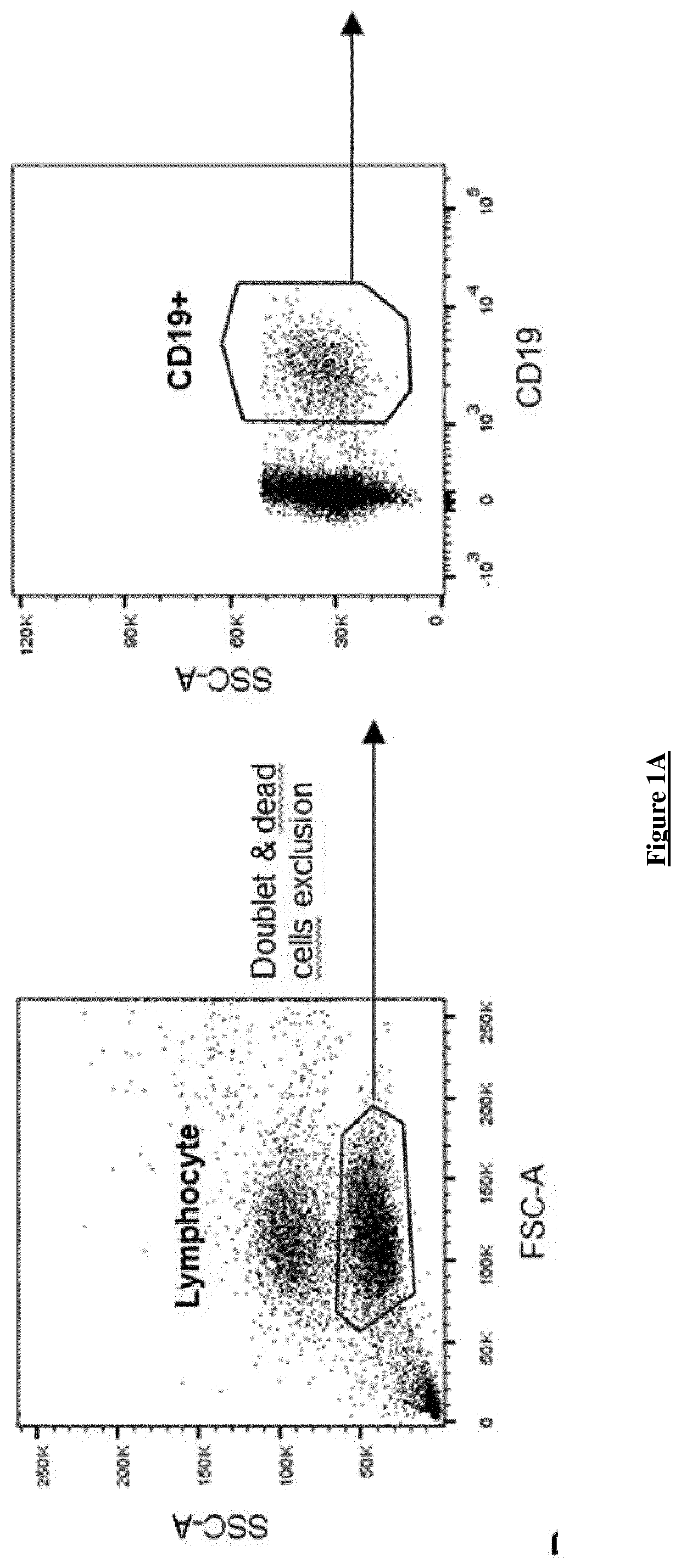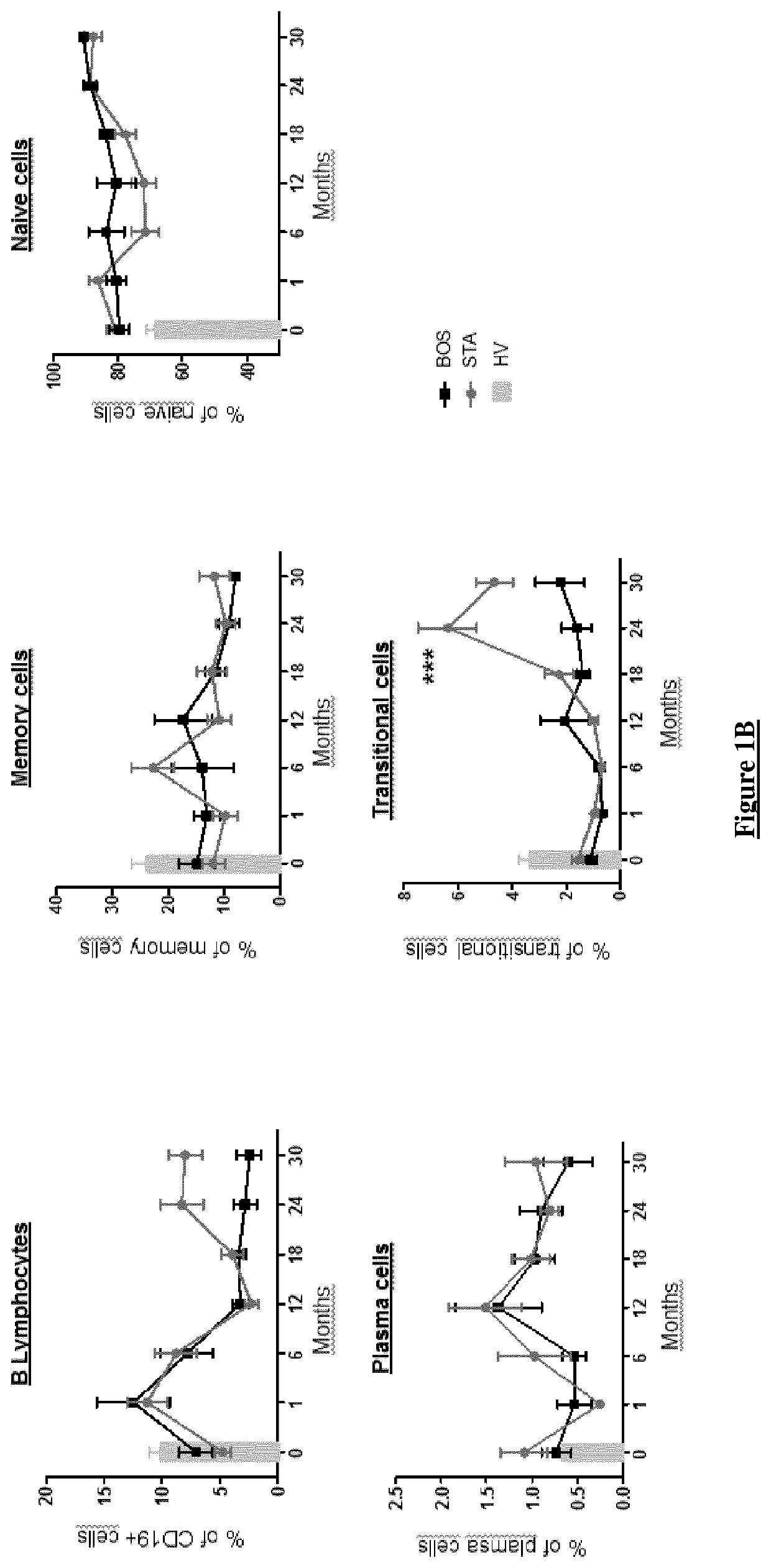Cd24hicd38hi transitional b cells and cd9 as new biomarker of long-term human lung allograft survivial
a technology of transitional b cells and cd9, which is applied in the field of prediction of the outcome of an allograft in human, can solve the problems of inability of clinical surrogates used to define bos to detect early stages of pathology, inability to achieve clinical acceptance, and inability to demonstrate robustness in these studies to achieve clinical acceptan
- Summary
- Abstract
- Description
- Claims
- Application Information
AI Technical Summary
Benefits of technology
Problems solved by technology
Method used
Image
Examples
example 1
[0134]1.1. Baseline Characteristics of Patient Population
[0135]CLAD is a heterogeneous disorder that may develop through different clinical phenotypes (1-4). Among the 50% of patients developing a CLAD by 5 years post-TP, 15% are restrictive allograft syndrome (RAS) and 35% are BOS (32). We focused on BOS, the most common (Table 1). Two groups of LT recipients were included in the study: 20 stable patients (STA) and 21 patients developing a BOS (BOS) in the 4 years post-TP. 20 healthy volunteers (HV) were added as controls. BOS is defined as patients with a decrease in lung function indicator FEV1 of at least 20% compared to maximum values assessed after transplantation and an airway-fibrosis exclusively obstructive disease. None of the usual risk factors of CLAD significantly differed between STA and BOS patients. Indeed, most of the patients received bilateral lung transplantation (67% and 63% of STA and BOS respectively). Recipient age (mean of 48 and 59 years for STA and BOS res...
PUM
 Login to View More
Login to View More Abstract
Description
Claims
Application Information
 Login to View More
Login to View More - R&D Engineer
- R&D Manager
- IP Professional
- Industry Leading Data Capabilities
- Powerful AI technology
- Patent DNA Extraction
Browse by: Latest US Patents, China's latest patents, Technical Efficacy Thesaurus, Application Domain, Technology Topic, Popular Technical Reports.
© 2024 PatSnap. All rights reserved.Legal|Privacy policy|Modern Slavery Act Transparency Statement|Sitemap|About US| Contact US: help@patsnap.com










